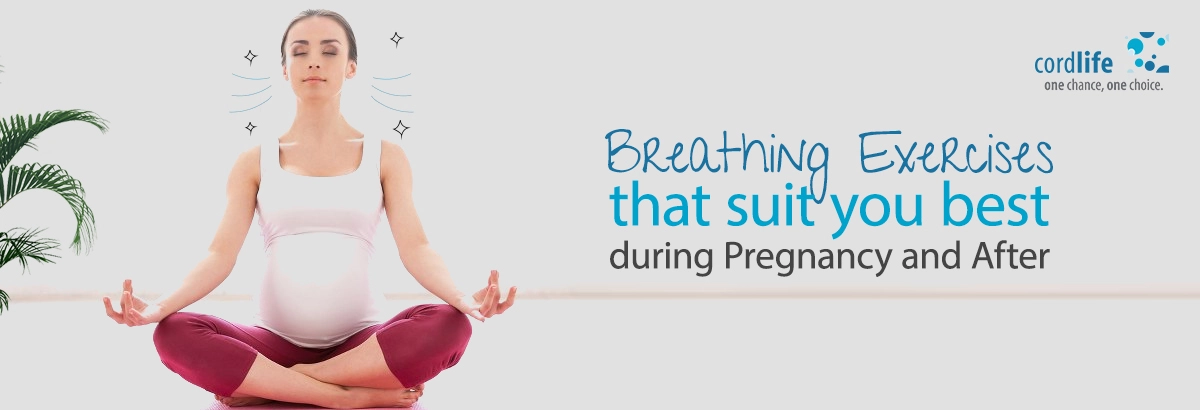Table of Contents
Both pregnancy and postpartum are the transitional phases in both the mom-to-be and the new mom’s life.
In the nine months of the pregnancy journey, you’ll see yourself changing like anything, whether in the body or mind. You’ll swell, put on weight, and feel itchy, and anxious because you’re developing another life inside you.
Intake of a balanced, and nutritious diet, drinking plenty of water, and staying active can make you feel healthy during your pregnancy.
While you plan to stay active and include a lot of exercises during your pregnancy regime, don’t forget to include relaxation and breathing techniques during your pregnancy.
Before you start with your breathing techniques, ensure that you get a yoga mat or a folded blanket for yourself and sit on it. You can alternatively, sit on a comfy chair and keep your feet at rest.
Here’s how you can include breathing exercises in your pregnancy regime:
Deep Breathing Exercise
When you breathe deeply, you take in air in large amounts, try to hold it for a few seconds, and release the air slowly. This will help your achy muscles feel relaxed. Besides this, deep breathing exercises can help deal with morning sickness and fatigue. Morning sickness is an early sign of pregnancy and it stretches between 12 to 14 weeks. So, breathe deeply, stay focused on the sound and rhythm of your breath, and then ease your breath. Repeat this pattern for at least 10 times.
Belly Breathing
To practice this breathing exercise, you can place your hands on your belly button and slowly move it behind your back and spine. Belly breathing is one of the best ways to keep the blood circulating throughout the body, and reduce stress, as well as anxiety. (As it is quite natural for you to feel anxious for the child you’re developing inside you). Moreover, performing belly breathing exercises keeps you ready for childbirth.
Breathing From the Chest
You can start with chest breathing after you’ve finished belly breathing for at least 5 minutes, as it will help in expanding the rib cage and thoracic cavity after each inhalation and exhalation. By practising this breathing exercise, you can save yourself from giving birth preterm.
Visualisation or Mindfulness
To combat the pregnancy’s emotional upheavals, it’s important to practice awareness around your thoughts through meditation and mindfulness. Visualisation exercises can also help calm your mind and promote relaxation. All you need to do is imagine yourself going through all the stages of pregnancy. Find a comfortable place to sit or lie down while you do this exercise.
Variable Breathing
After crossing all the stages of pregnancy, when you enter the stages of labour and childbirth, variable breathing helps. Focus on the sounds of “hee-hee-hoo” — or “pant-pant-blow.” These are light and shallow breaths, which you can practice for 10 seconds, almost every day.
What are the Benefits of Practicing Breathing Exercises During Pregnancy?
During pregnancy, you can include most of the breathing techniques, listed above, and enjoy the benefits of it. The benefits of breathing exercises during pregnancy are:
- It can help you reduce your stress and anxiety
- Deep breathing exercises will help in reducing pregnancy insomnia
- It can boost your level of energy
- It can improve your power to digest and keep your pregnancy-induced blood pressure absolutely under control.
- Through breathing exercises, you can connect with your baby inside you.
But, do you think, after enjoying the benefits of your pregnancy, and giving birth to your baby, is all that you need? No! Even after you’ve given birth to your baby, breathing exercises help a lot.
Immediately after the birth of your baby, your postpartum body will go through a lot of changes. Thanks to your declining hormones, you’ll be surprised with exertion, bleeding, haemorrhage, etc. So, to deal with these changes after you’ve given birth to your baby, you can try out Diaphragmatic Breathing, Transverse Abdominis Isometric, Pelvic Floor Contraction, etc. Practicing these breathing exercises, you can make your abdomen, and pelvic floor relaxed.
